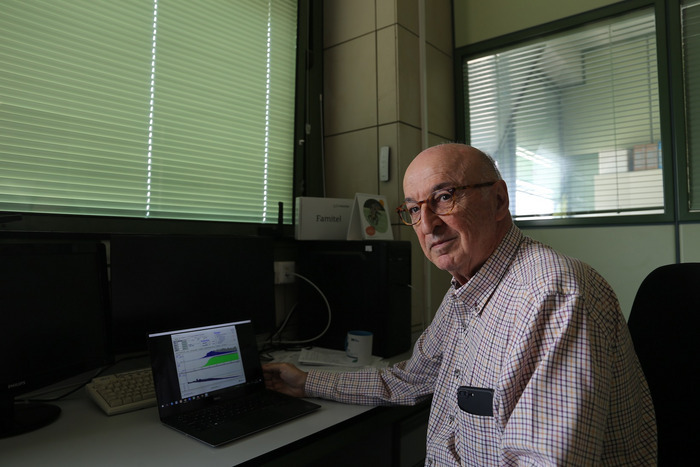Spanish researcher Fereres develops simulations of alfalfa in AquaCrop forecasting tool

The Department of Agronomy at the UCO improves, together with the IAS - CSIC, the AquaCrop model by introducing the option of simulating alfalfa yield with precision
AquaCrop is the crop growth simulation model created by the UN’s Food and Agriculture Organization (FAO). Playing an essential role in its development was Elías Fereres, a Professor Emeritus in the María de Maeztu Unit of Excellence at the University of Cordoba’s Department of Agronomy (DAUCO). This model, which after almost 20 years of life is the second most used in the world in research, allows simulating the response of crop yields according to climate, soil, and irrigation management, something very important in areas where water is a limiting factor in production.
Until now, this model only allowed users the ability to simulate the yield of annual crops (herbaceous crops with annual cycles), but not perennial crops. This has changed thanks to new work by the DAUCO and IAS-CSIC, which includes the simulation of alfalfa in AquaCrop, offering valid crop yield predictions for different climates and zones.
Alfalfa is a perennial forage crop that lasts 3 to 5 years in Mediterranean climates and is cut several times each year, as it resprouts again (4 to 8 cuts per year). To model the life cycle of this crop and to be able to predict harvests "there were two main challenges in the simulation, which were these periodic cuttings and resprouting during the same season, and the fact that alfalfa, as a perennial crop, stores reserves in autumn and uses them in spring to grow, so growth in spring is not only determined by photosynthesis but also by these reserves that the plant stores," explained Professor Fereres.
Therefore, it was necessary to include in the model a routine describing both the transfer of photoassimilates between the aerial part and the underground storage organs and the plant's use of these assimilates for growth.
Yield data collected in Belgium, Turkey, and Canada for different alfalfa cultivars, various years, and different field and irrigation management strategies, was used to calibrate the model. 81 yield data points across different climates, varieties, zones, and irrigation schedules were used to verify this model, which constitutes a robust tool for predicting alfalfa production in different environments.
"The results were very good after this verification. We were able to simulate the performance with very good correlations between the simulated and the real data obtained," Fereresreported, since no systematic overestimation or underestimation was detected by the model.
AquaCrop's future challenges
By introducing the variables of crop, climate, soil, and irrigation management (whether there is water or not and, if there is, how irrigation is distributed) it is possible to simulate the maximum yield that might be obtained in each case. In this way, irrigation can be adapted to optimize management for greater production.
"After 20 years of use it is a very well-optimized application, which has been tested on many crops, and in many environments, and the evidence supports that it works well and is getting better," says Fereres about the application, whose 7th version has just been released, now including the option of modeling alfalfa yield.
In the future the application could be adapted to include woody crops; a challenge, according to Fereres, "since simulating the production of trees is very difficult due to the phenomenon of alternation (trees produce more one year and less the following), and because tree production is determined by the growth and development of previous years."

 How to resolve AdBlock issue?
How to resolve AdBlock issue?